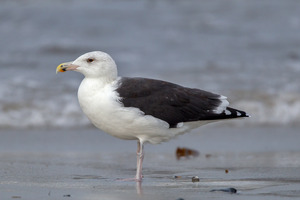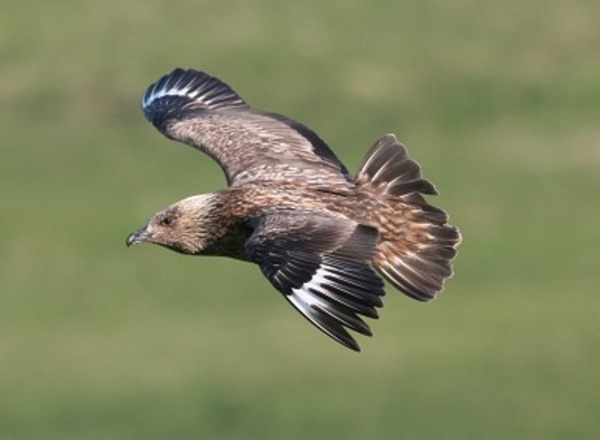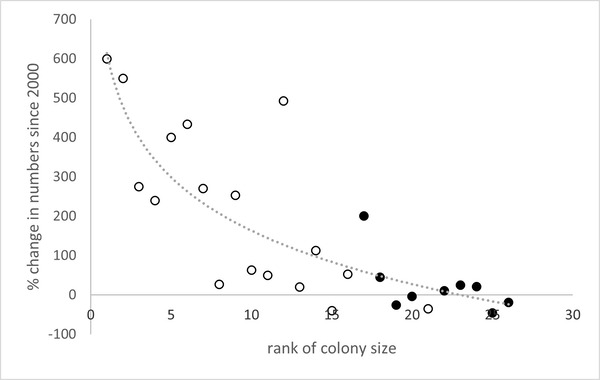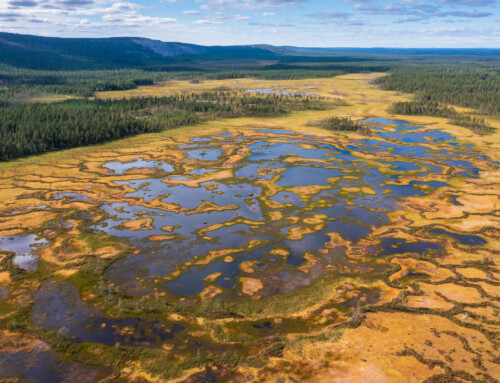 LINKED PAPER
LINKED PAPER
Recent changes in colony sizes of two seabird species in Scotland are not strongly influenced by Birds Directive status of the colony. Furness, R.W. 2022 Ibis. doi: 10.1111/ibi.13127 VIEW
It is widely recognised that the EU Birds Directive can give strong protection to bird populations through the establishment of Special Protection Areas (SPAs). In the 1990s in the UK many sites were designated for their breeding seabirds. However, during the breeding season seabirds forage over very large areas outside of these SPAs. Most species also show seasonal migrations and exist independently of their breeding colony during the nonbreeding season. Studies examining whether SPA designation of seabird breeding sites improves conservation status are lacking. Given the large financial cost associated with designating and protecting these sites, there is an urgent need to understand their efficiency for conservation of our internationally important seabirds.

Figure 1 The Great Skua bred at 26 colonies in Scotland in 2000-2020, of which nine were designated as Special Protection Areas with Great Skua as a breeding feature. Although breeding numbers increased slightly from 2000 to 2020, almost all of the increase was at sites where Great Skua was not a designated breeding feature.
This study used colony census data held in the JNCC Seabird Monitoring Programme database to quantify change in breeding numbers of Great Skuas (bonxies) Stercorarius skua and Great Black-backed Gulls Larus marinus at colonies in Scotland, and to compare between sites that were designated as SPAs for these breeding populations and sites that were not. The data show that bonxie breeding numbers at colonies where they were designated breeding features either declined or showed very little increase. In contrast, numbers increased considerably at most bonxie colonies that were not designated for breeding bonxies. Great Black-backed Gull numbers declined at almost all colonies whether designated as SPAs or not. But as with bonxies, the decline was at least as large and apparently larger at sites designated for breeding Great Black-backed Gulls. Counterintuitively, the designation of breeding sites as SPAs seems to result in a worse outcome rather than a better one. However, this would be a misleading interpretation.

Figure 2 Change in breeding numbers of Great Skuas at colonies in Scotland since Seabird 2000 in relation to rank of colony size (from smallest rank 1 to largest rank 26). The dotted line shows the best fit logarithmic regression. Sites where Great Skua is an SPA breeding feature are shown as solid dots, sites where Great Skua is not an SPA breeding feature as open circles. Numbers have decreased or increased very little at most SPA sites but have increased considerably at most sites that are not designated for breeding Great Skuas.
It seems likely that the worse performance of sites designated as SPAs for these species is simply a reflection of the fact that SPAs were selected because they held the largest breeding numbers. Larger colonies are more likely to be affected by density-dependent competition for limited and declining resources. The evidence suggests that breeding numbers of these two species are mainly driven by factors affecting their population over large spatial scales, such as climate change and reduction in forage fish stocks. For both these species it appears that designation as breeding features of SPAs has had negligible effect in mitigating these wider-scale adverse effects of environmental change.
This is the first study to demonstrate that designating breeding site SPAs for seabirds is not enough to improve their conservation status. The evidence strongly indicates that populations of birds that are mobile need policies to protect foraging habitat at a wider spatial scale. It is not enough to designate SPAs for breeding seabirds without addressing wider scale pressures and threats that occur throughout their range. A seabird conservation strategy must address challenges presented by climate change, fisheries, and other pressures at a seascape scale, and not assume that designating breeding sites will be sufficient to protect our internationally important seabird populations. SPA designation may help and may be more successful for seabirds where nesting habitat is particularly limited, but for the two selected study species we need to focus on management to reduce widespread environmental pressures because those are what is driving population change.
References
Church, G.E., Furness, R.W., Tyler, G., Gilbert, L. & Votier, S.C. 2019. Change in the North Sea ecosystem from the 1970s to the 2010s: great skua diets reflect changing forage fish, seabirds, and fisherie. ICES Journal of Marine Science 76: 925-937. VIEW
Prince, K., Rouveyrol, P., Pellisser, V., Touroult, J. & Jiguet, F. 2021. Long-term effectiveness of Natura 2000 network to protect biodiversity: A hint of optimism for common birds. Biological Conservation 253: 108871 VIEW
Silva, J.P., Correia, R., Alonso, H., Martins, R.C., D’Amico, M., Delgado, A., Sampaio, H., Godinho, C. & Moreira, F. 2018. EU protected area network did not prevent a country wide population decline in a threatened grassland bird. PeerJ 6: e4284 VIEW
Wauchope, H.S., Jones, J.P.G., Geldmann, J., Simmons, B.I., Amano, T., Blanco, D.E., Fuller, R.A., Johnston, A., Langendoen, T., Mundkur, T., Nagy, S. & Sutherland, W.J. 2022. Protected areas have a mixed impact on waterbirds, but management helps. Nature 605: 103-107 VIEW
Image credit
Top right: Larus marinus © Andreas Trepte CC BY SA 2.5 Wikimedia Commons.
If you want to write about your research in #theBOUblog, then please see here.





